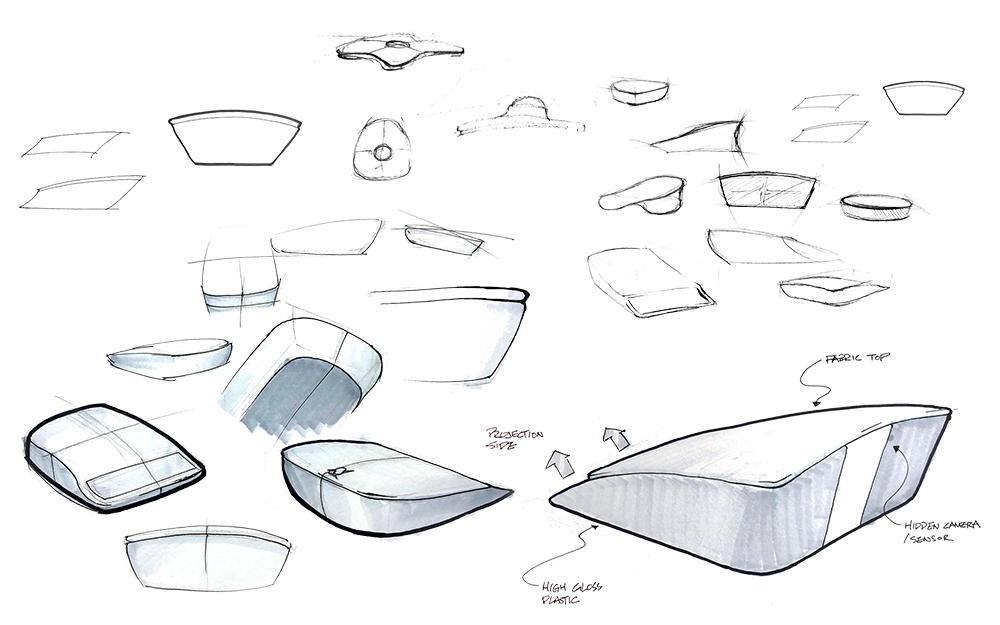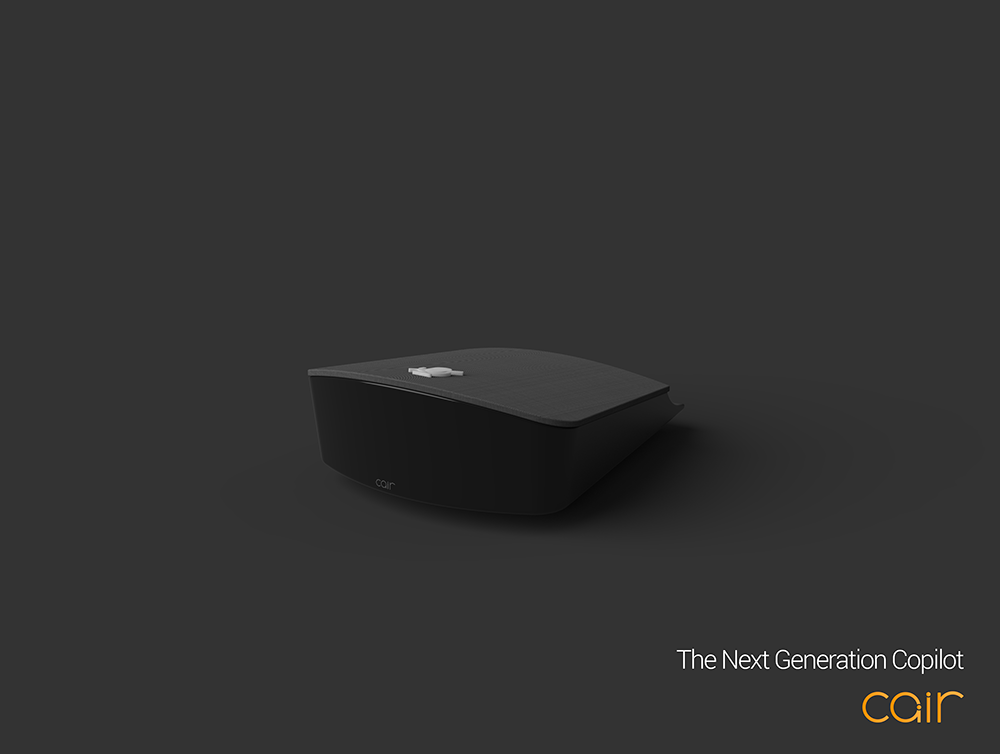Red Dot Design Award | Communication Design
International Design Excellence Award | Finalist
European Product Design Award
Indigo Design Award | Gold in UX, Interface & Navigation / Silver in Interactive Design



Red Dot Design Award | Communication Design
International Design Excellence Award | Finalist
European Product Design Award
Indigo Design Award | Gold in UX, Interface & Navigation / Silver in Interactive Design



Resulting in more than 1,000 injuries each day, distracted driving is the number one cause of car accidents in the United States.

Powered by AI assistant and emotion–detecting Affective Computing, Cair provides a safe and seamless driving experience preventing driver distraction
In order to create a solution to the problem that is user–friendly and empathetic, we've created an agenda for our creative design process

According to the American Automobile Association (AAA), distracted driving contributes to up to 8,000 car crashes per day. Drivers spend more than half their time behind the wheel in multitasking mode.
Driving requires a surprising amount of brainpower. Human brains do not perform two tasks at the same time. Instead, the brain handles tasks sequentially, switching between one task and another. People do not perform as well when trying to perform two attention-demanding tasks at the same time. This often leads to a phenomenon called inattention blindness , which is when your brain is overloaded and you are not actually processing what you are seeing.
Our survey discovered that people spend almost a quarter of waking hours in the car, connect their phones to the car and store them in accessible places and are often engaged in non-driving activities while driving.
Based on the survey, we've created a series of interview questions Here are some notable quotes that stood out:
"I sometimes drive up to my apartment and don’t remember driving there."
"I have to pull over somewhere because I’m worried about what my kid is doing in the back."
"When I get upset, I feel like it affects my driving."


Our target users are distracted drivers or people who want to enhance their driving experience. This meant our users could range from a teenage driver to an elderly driver. In order to accomodate the needs of users from different age groups, we've created three personas that each represents: a part-time working teenager, a working mom and a dad.


One of the things that stood out from our research was that when the users are emotionally aroused, they weren't aware of their own state. Just a simple solution of having someone who tells them to focus on driving helped. Our smart camera, powered by Affective Computing, can detect the driver's distraction level. Once the driver is caught in a distracted state, an AI assistant will provide help accordingly. Head up display can provide the necessary visual information, at the same time reduce visual distractions.



Just like how having someone constantly watching you in your passenger seat can be annoying, AI assistant can be the same. We realized how important it would be to carefully design our voice persona to be helpful but not too infringing. We've developed our voice persona based on "The Big Five personality traits" to be calm, trustworthy and professional but assertive in dangerous situations.



We made a list of hypotheses moving in to the testing session. Including:
–The voicetone of the AI assistant is calm, trustworthy but assertive.
–Users will be satisfied with the features designed based on previous user interviews.
–Users will have a positvie response to affective AI.
–Users may find the navigation screen diffcult to understand.
–Users may not be familiar with the concept of HUD.
–Users may not have an established mental model for using voice assistant.
Our post testing survey reflected that the users had a hard time understanding the concept of 3 second rule for focus mode. Also, they were not comfortable about AI generating outgoing messages.






This was my first time devoting a part of my every day for such a long time on a project. I learned a lot about how extensive the design process can be. I was in a different country from my other teammates which meant I had to work with them remotely over a video call. The time difference did not help. This was a huge limitation especially for the later part of the project when we couldn’t physically look at the prototypes together and discuss them. But we figured out a way to collaborate by dividing up our work to the specifics. I know designers often times have to work remotely so this was a good experience to have. Our teammates have been flexible and understanding throughout the entire project which made things so much easier.